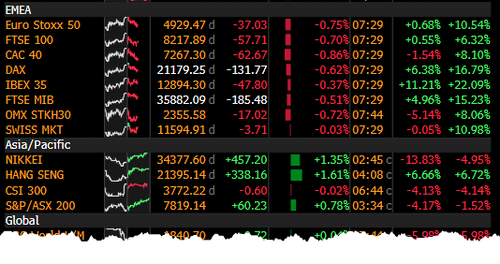The tariff war is in full swing, but the analysis of their effect has focused on economies. While this makes sense, a look at some of the industries set to bear the brunt of the protectionist measures might be useful—because it might reveal a means of solving the trade deficit problem that has been irking President Trump enough to make him pick the trade equivalent of the nuclear option. The petrochemical industry has been the fastest-growing arm of the oil and gas industry for years.
This is especially true of China, which has emerged as a leader in petrochemicals and where petrochemicals have driven as much as 90% of crude oil demand growth since 2021, according to the International Energy Agency. However—and this is the important part—petrochemicals are also important for the U.S.

oil and gas industry; and the two have been enjoying an active trade relationship that is now in jeopardy because of the tariffs. Oil and gas, which often take the center of attention in the tariff discussion, are in fact a negligible portion of the total U.S.
-Chinese energy trade. The bulk is petrochemical feedstocks. if(window.
innerWidth ADVERTISEMENTfreestar.config.enabled_slots.
push({ placementName: "oilprice_medrec_atf", slotId: "oilprice_medrec_atf" });';document.write(write_html);} Back in February, Reuters reported that China’s imports of ethane from the United States were set for a surge this year despite the trade war that was already heating up at the time. The report cited analyst forecasts putting the import figure at between 6.
3 million and 8.2 million metric tons, or an increase of between 9% and 34%. These are already impressive figures, but here is an even more impressive one: Chinese companies account for close to 50% of U.
S. ethane exports, according to the Energy Information Administration. That makes the country a key trade partner for the U.
S. petrochemicals industry. Yet China also accounts for a solid portion of U.
S. exports of liquefied petroleum gas, at 27%, according to data from Kpler, cited by Reuters’ Ron Bousso in a recent column detailing the petrochemical relationship between the United States and China. In fact, China has become such a big buyer of U.
S. LPG, ethane, and other oil and gas products that it has turned into a significant driver of production growth. With the latest tariff exchange that saw the U.
S. slap an extra 34% tariff on Chinese imports and China’s retaliation with a levy of the same size, that blossoming trade flow of U.S.
oil and gas products to China may shrink significantly. That may hasten the end of the tariffs. The reason, as pointed out by Reuters’ Bousso, is the fact that in that trade relationship, the United States is the more vulnerable party.
China also imports petrochemical feedstocks from Middle Eastern oil states, African countries, and Australia. Replacing the U.S.
as a supplier won’t be completely headhache-free, but it can be done. For the U.S.
producers, however, it would be impossible to find a replacement client of China’s size because there aren’t any buyers of ethane and LNG of China’s size out there. On the other hand, the tariffs could hasten the decline in petrochemicals that some analysts suggest is coming. One such suggestion came from ICIS last year and it focused on the possibility that the surge in Chinese petrochemicals demand was the result of its latest construction boom.
Once that boom was over, the argument went, petrochemicals demand was going to follow. Another bearish report came more recently from Boston Consulting Group, which noted that petrochemicals growth was slowing. Also recently, Reuters released a report predicting capacity cuts in the petrochemicals industry as Trump’s tariffs turn into the last drop for an industry that has been suffering weak margins and overcapacity for a while now.
While petchem trade between the U.S. and China may be blossoming, the client industry of that trade is not exactly blossoming—and tariffs may help hasten its restructuring and survival the way a bitter but life-saving medicine might.
if(window.innerWidth ADVERTISEMENTfreestar.config.
enabled_slots.push({ placementName: "oilprice_medrec_btf", slotId: "oilprice_medrec_btf" });`;document.write(write_html);} By Irina Slav for Oilprice.
com More Top Reads From Oilprice.com.
Business

Petchem Trade Caught in Tariff Turbulence

The tariff war is in full swing, but the analysis of their effect has focused on economies. While this makes sense, a look at some of the industries set to bear the brunt of the protectionist measures might be useful—because it might reveal a means of solving the trade deficit problem that has been irking President Trump enough to make him pick the trade equivalent of the nuclear option. The petrochemical industry has been the fastest-growing arm of the oil and gas industry for years. This is especially true of China, which has emerged as...















